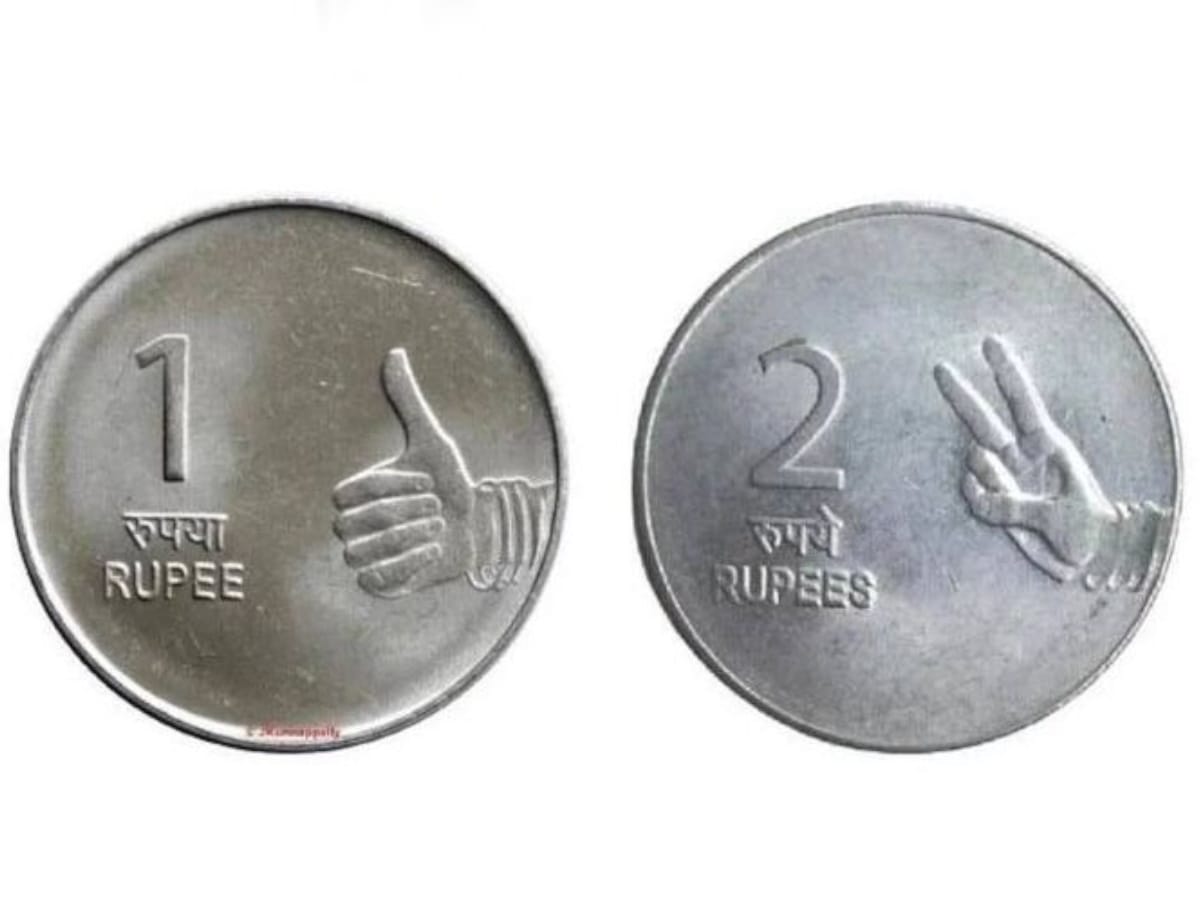In recent years, photographs of Indian coins have been circulating on social networks, in which a hand with one or two fingers can be seen next to the denomination. We checked whether these images are actually addressed to illiterates.
Most often this information is accompanied by a photograph of a 2 rupees coin from 2008. On the reverse, near the Arabic numeral 2, there is a hand with two protruding fingers. As the caption says, “This is what coins look like in a country where 35% of the population is illiterate.”
You can read about this on entertainment sites (“Peekaboo"), on social networks (Telegram, X) and some photo banks.
Rupee - a modern monetary unit of India, which bears the same name as medieval Indian coins. Since 1950, new metal banknotes of independent India have been issued, history which can be tracked on the official website of the Reserve Bank of the country. There are also coins with gestures from viral posts in denominations of 1 rupee, 2 rupees and 50 paise (1/2 rupee).

This series was released into circulation in 2007, and was replaced in 2011 by other coins, no longer depicting gestures. This symbolism is not found in earlier episodes either. And if on two coins (1 and 2 rupees) the number of fingers corresponds to the denomination, then on a coin of 50 paise the image of a clenched fist clearly does not fit into this logic.
What then do these gestures mean? The answer to the question is suggested by the name of the series - Nritya Mudra. This phrase is also mentioned in the annual report Ministry of Finance of the country for 2007–2008, and in the official catalog Indian Mint.
Mudra is a traditional symbolic gesture in Hinduism, Jainism and Buddhism. Most mudras are performed with the hands or only the fingers. Each mudra has a whole scroll symbolic interpretations. Thus, nritya mudra is gestures that accompany various dance poses. In a 2007 publication reportedthat the mudras used are taken from the Bharatnatyam dance.

The mudras depicted on the coins (or rather, hasta mudras - finger gestures) have their own titles.

Sikhara used to depict the god of love, bow, column or pillar, guarantee, offerings to ancestors, tooth, interrogation, denial, remembrance, etc. Musti symbolizes upright walking, grasping objects and a fighting pose. Kartarimukha Suitable for depicting a couple's separation, conflict, robbery, death, alienation, lightning, sleep, etc.
Let us pay attention to the fact that to denote unity or loneliness, it is not sikhara, but another hasta - Suchi, where the index finger is involved.

Thus, Indian coins of several denominations depict traditional Indian dance gestures rather than signs for illiterate people. Typically, each series of coins carries its own symbolism. At various times on the reverse of the rupee depicted corn cobs (as a symbol of prosperity) or the national emblem of India.
Cover photo: social networks
Read on topic:
- Is it true that the Central Bank of Argentina proposed placing a portrait of Messi on one of the banknotes?
- Is it true that Russia has announced the release of a new 10,000 ruble banknote with the image of Sochi?
- Is it true that the 500-ruble bill depicts an Argentine warship?
If you find a spelling or grammatical error, please let us know by highlighting the error text and clicking Ctrl+Enter.






